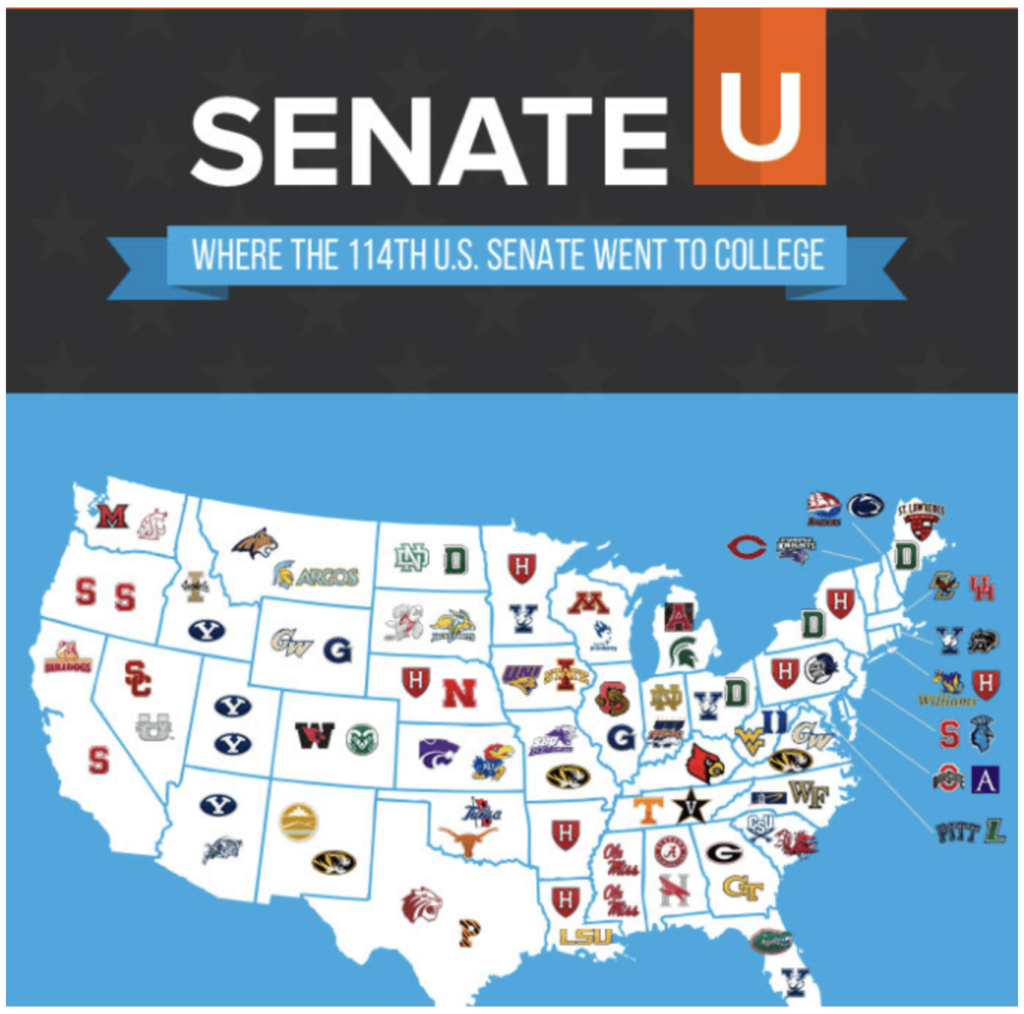Data isn’t just for the analysts—the best B2B content strategy is based in data. Not just to justify why you’re doing what you’re doing, but to improve and bolster the content itself. When you use data to support the claims in your content, it legitimizes and solidifies your ideas, while also providing greater value to the reader, I.E. potential client or customers.
According to Content Marketing Institute, 90 percent of top-performing B2B content marketers put the audience’s informational needs first, making this a crucial strategy to get more from your content.
What’s more, data-backed content also allows you to assert your expertise in your field, and to boost your thought leadership within your niche. Delivering consistently valuable content also leads to brand trust, while making it easier to drive organic backlinks.
If you need help finding data to use for your B2B content strategy, test these six ideas.
1. Turn Existing Company Data Into Research Reports
Many B2B companies don’t realize how much data they have at their fingertips that can transform information from your business into reports that customers will find valuable. Research reports drive the most leads with the highest conversation rates, according to an Ascend2 report, making this a valuable strategy.

After finding the data, ask yourself: What does the data suggest? How can I relate this to interesting topics for my audience, or use it to support my ideas? Use this to create a qualitative story that gives life to the insights. For example:
“Nearly 75 percent of business owners spend $300 annually on website hosting, while only 5 percent spend money for a private server. Of those 5 percent, 90 percent are tech startups. With tight budgets, most small business owners find the need for a private server—as a tech company, however, it’s a critical investment that can’t be overlooked.”
Here are a few potential sources to mine data from:
- Sales figures: Can your sales be used to support industry trends or share trends you’ve seen within your specific niche?
- Data from your product/software: Annual reports like Buffer’s State of Social.
- Analysis of your database: A SaaS company can use software performance data to share benchmarks for specific industries.
2. Develop Proprietary Data with Surveys to Drive Organic Links
Running a survey is a great way to get unbiased responses to accumulate data on any topic you’d like. You can run surveys through platforms like Survey Monkey, Google Survey, Typeform, or Pollfish. While this does require an investment, as you typically pay per response, the information is yours.
The beauty with surveys is that they allow you starting from scratch. If you’ve never run one before, here are a few steps to make sure you get the most usable survey results:
- Strategize on broad topics that relate to your business.
- Narrow your topic list down to specific questions that will yield responses you can use for link building or to make interesting statements. For example: “How much do you spend on HR software” is not as strong as, “How much do you spend on HR software each month?” The data you get is more specific, and therefore, more useful.
- Always include a qualifying questions, RE: “Are you a small business owner?” to make sure you’re getting responses from the right audience or analyzing it correctly. Google Surveys often requires you to have this; if not, the survey is often more expensive.
From the survey results, you can create multiple pieces of content. Turn the data into blog posts, infographics, social media graphics, and other visuals. Other writers and publications want to link to data and insights that are backed by legitimate surveys. By creating this yourself, you increase the chances of earning those backlinks. Perhaps even publish a press release to drive journalist interest to encourage linking.
Get more from backlinks: How to Build Thought Leadership With Guest Posting
3. Create Case Studies for High-Value Blog Posts
A case study is a content piece that summarizes a success you’ve had in your business. “Case studies are a valuable and high-returning addition to your content portfolio, especially if you have significant client work to show off in an informative and engaging way,” Jayson Demers, founder & CEO of AudienceBloom, tells Forbes.
Don’t be scared to test this B2B content strategy if you’re a new company. No matter how long you’ve been in business, client wins and successful projects can translate into a case study. Simply outline the client or project, the objectives, any pain points, your methodology/process, and finish with overall results. For example, check out my link building case study for Selz.com.
Case studies are particularly powerful in B2B content marketing because it provides clear proof of your value to potential clients—even better if the reader is within the same industry or niche as your case study client.
For inspiration, check our Hubspot’s exhaustive list of case study examples.
4. Talk with Current Clients to Personalize Content
When talking about personalization for the B2B funnel, Itay Erez, VP of Marketing for BrightInfo jokes to Convince and Convert: “Remember when Bill Gates said, ‘Content is king,’ about a gazillion internet years ago? Personalization is the new stronger, taller, king-er king.”
Erez is not wrong. According to a recent Epsilon study, 80 percent of consumers are more likely to do business with a company that offers personalized experiences. This sentiment extends beyond B2C to B2B as well. “B2B buyers want the same experience,” says Theresa O’Neil, VP of marketing at Showpad. O’Neill explains to B2B News Network: “Because they have grown accustomed to curated content as consumers, [B2B buyers] expect the same level of personalization at work.”
Gather insights and data from existing clients and partners. If you run a small shop, reach out to clients personally. On calls, refer to a list of prepared questions that allow you to understand their company, workflows, pain paints, and business goals.
If you manage a large influx of customers or clients, speak personally with your largest accounts. Then, send a short survey to the others. Offer an incentive to complete the survey—think: a starbucks gift card—if you think you need to.
Use the data to personalize your B2B content strategy and the experience of your readers:
- Collect enough responses to create stats for your content. For example: “In a survey of our top clientele, we’ve found that 80 percent of marketing agencies, with 1-10 employees, find [insert pain point] to be their greatest struggle each month.”
- Use your insights to personalize the messaging in retargeting campaigns, email marketing, SMS messaging, and on-site advertising.
- Write articles that directly address concerns or questions that come up in your research. When paired with the right keywords, this drives targeted traffic and can be used as a sales tool.
- Use the data to create seasonal content and take advantage of spikes in organic traffic for certain keywords and topics.
Don’t forget about UGC: How to Leverage User-Generated Content for Small Business
5. Support Your B2B Content Strategy With Publicly Available Data
If you don’t have the resources or budget to publish your own data-backed content, you can still use this B2B content strategy. There’s are many sources of data that you tap into—you just need to get creative and resourceful.
I love this article from Search Engine Journal about creating link-worthy content from accessible data. The author starts with an interesting example from his personal experience. He created a content piece with a graphic that displays the alma mater of each state senator. Once published, it got picked up by the Washington Post, along with dozens of other known publications.

Their source: publicly available information. Check out some of these publicly available sources that you can easily access to find data:
- State and federal databases
- Academic studies
- Google Trends and search data
To make this method work for you, find a new angle on public data. Better yet, compare data points from X years apart. For example, there’s a wealth of information on employment data available from the Bureau of Labor Statistics. A recruiting firm could compare employment trends over time to compile data for a content piece on the HR trends.
Use Data to Strengthen Your B2B Content Strategy
You have to think like an analyst and a storyteller to make your content stand out. A data-backed B2B content strategy will provide more value for your audience, drive clients and customers, and legitimize your brand as an industry expert. It can even allow you to earn you high-quality organic backlinks with well-known publishers.
Don’t forget: content creation is just the first step. You need to promote your content to drive traffic, backlinks and industry recognition.



